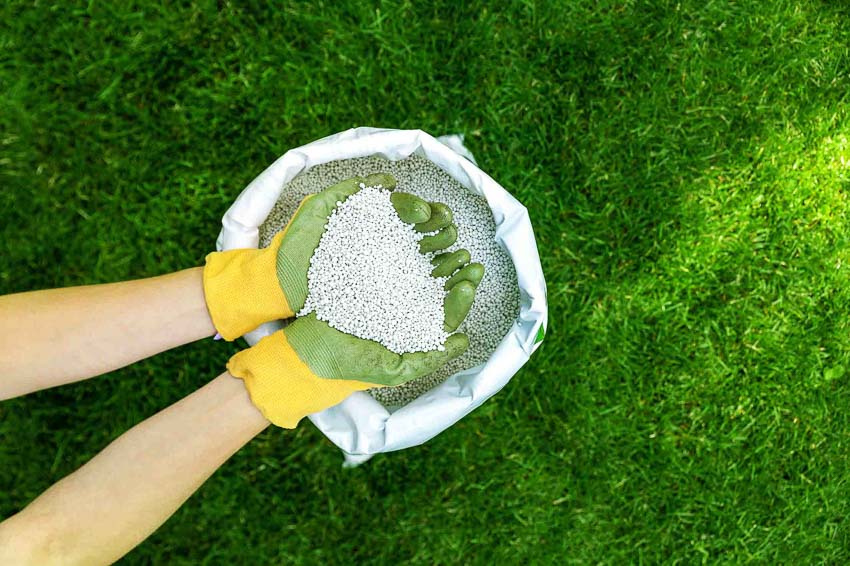Introduction
Most soils don’t have enough nutrients to grow healthy grass, so a fertilization schedule is an important element of lawn care. However, it’s easy to make mistakes when fertilizing, and the results can be disastrous. Learn how to use fertilizer to get the green, luxurious grass you’ve always wanted.
The importance of fertilizing your lawn
Your grass needs the right amount of nutrients for optimal growth. Without fertilizers, unfavorable growing conditions can make your grass weak and more susceptible to disease, drought, traffic, and damage from pests.
Understanding how to apply fertilizer to your lawn will ensure that your grass gets the proper balance of nutrients.
Factors to consider when fertilizing
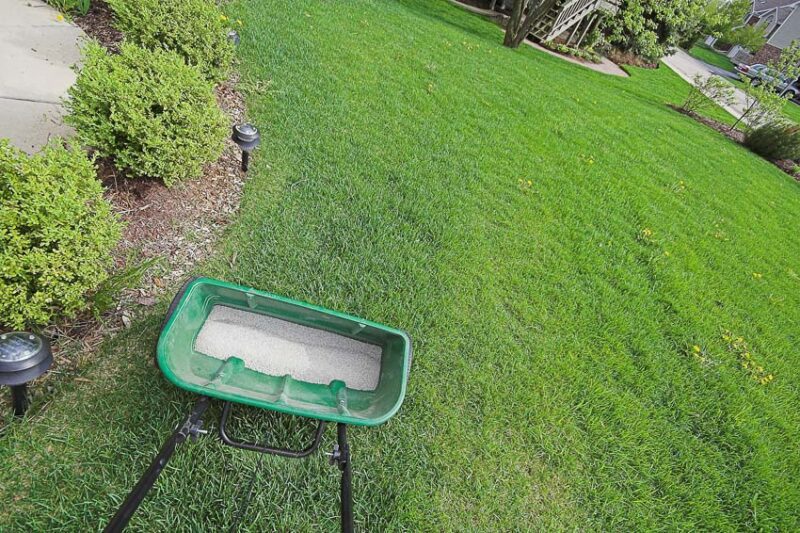
With expert tips on how to fertilize a lawn, you can avoid the top mistakes people make. Consider the following factors when developing a lawn fertilization program:
- What is the best fertilizer for your grass,
- How much fertilizer does your lawn need,
- When is the best time to fertilize, and
- What are the best methods and tools for lawn fertilizing?
Understanding Different Regions and Grass Types
Different types of grass grow better in certain regions, and it’s important to understand the seasonal weather changes, precipitation, and soil types in your area to give your grass what it needs.
Adapting your fertilization strategy to your region and grass type
During peak growing conditions, your grass is actively growing and absorbing nutrients, and that’s the best time to fertilize. Adjust your fertilization schedule so your lawn can take full advantage of optimal growth periods.
Cool-season grasses
If you live in the north, your lawn grows best with cool-season grasses, like perennial ryegrass and fescues. The peak growing periods of cool-season grasses are spring and fall when temperatures are between 60°F and 75°F (15°C to 24°C).
Warm-season grasses
High summer temperatures in southern regions like California and Florida cause drought conditions.
Warm-season grasses like Bermuda grass and zoysia grass grow best during late spring and early summer, when temperatures are between 75°F and 90°F (24°C to 32°C).
Identifying your grass type
Find out what growing region you live in to identify the type of grass in your lawn, then look at the individual plants. Use the shape of the grass blades, the growth habits of individual plants, and vernation patterns to aid you in identifying the type of grass in your yard.
Once you know the type of grass you are growing, developing a seasonal fertilization program is easy.
Methods and Tools for Fertilizing Your Lawn
You’ll get better results when fertilizing your lawn with the proper techniques and equipment.
Types of lawn fertilizers
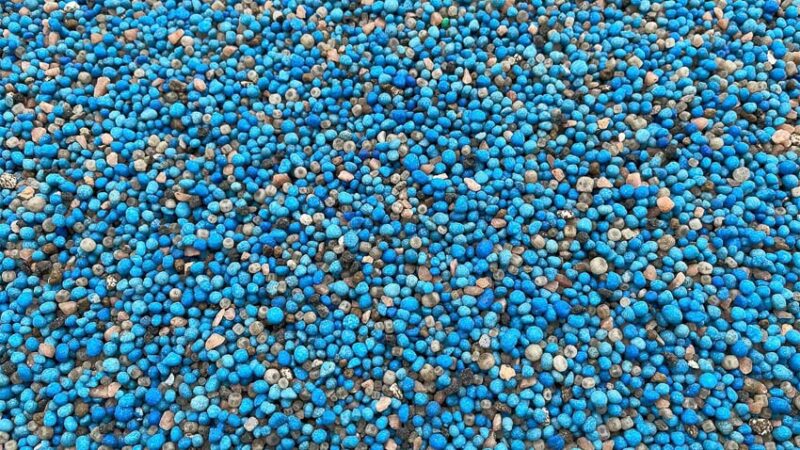
Choosing the best lawn fertilizer for your grass can be overwhelming. Learn more about organic and synthetic lawn fertilizers to help you decide.
Organic fertilizers
Natural fertilizers improve your soil’s health and benefit the microorganisms in your lawn. Pelleted varieties of organic fertilizers, such as pelleted chicken manure, are easy to apply, and your lawn will absorb the nutrients gradually.
Synthetic fertilizers
Inorganic fertilizers are highly soluble and quickly boost nutrients to your lawn. They are often combined with other chemicals like weed killers and insecticides so you can get the most for your time and money.
Quick-release fertilizers are specially formulated to provide essential nutrients that promote fast growth. They are used for blocking out weeds and helping a lawn recover from a disease, but they only last two to four weeks, and it’s easy to overapply them.
Time-release synthetic fertilizers provide nutrients at a more controlled rate based on conditions like temperature and moisture. As a result, they last longer than quick-release fertilizers, and they are safer for the environment.
Choosing the right fertilizer for your lawn
It’s important to make an objective assessment of your lawn before choosing a fertilizer because lawns have different nutrient requirements depending on their current condition. A soil test will also help you choose the best fertilizer for your lawn.
The most important factor in choosing lawn fertilizers is the N-P-K ratio. The percentages of nitrogen (N), phosphorous (P), and potassium (K) will determine the health and growth of your grass in the weeks and months following fertilization.
“Up, down, and all-around” is an old saying about N-P-K ratios and how these nutrients function to help your grass grow.
- N-“Up”-Nitrogen encourages green growth.
- P-“Down”-Phosphorous builds strong root systems.
- K-“All around”-Potassium supports the overall health of your grass.
Essential tools for lawn fertilization
Lawn spreaders make it easy to distribute the right amount of fertilizer evenly.
Handheld spreaders
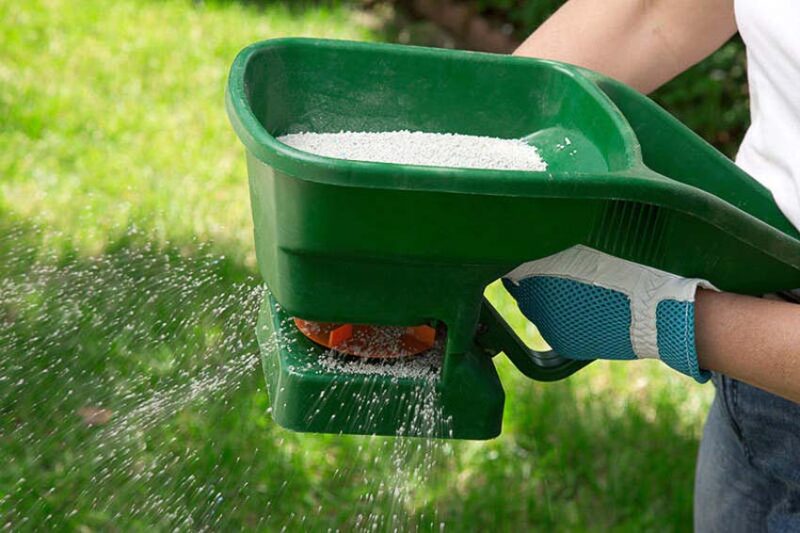
The two main types of hand-held spreaders are scoop-style and broadcast hand spreaders. Handheld spreaders are useful tools to have in your garden shed. Since they are small, they are easy to store when space is limited.
Scoop-style handheld spreaders are best for spot applications. They hold about 2 liters of granular fertilizer and have lids with adjustable dial openings to assist with even coverage.
Broadcast-type handheld spreaders hold about 4-5 pounds of fertilizer, requiring frequent refilling. The dial can be adjusted to change the fertilizer application rate, and both battery-operated and hand-crank models are available.
Broadcast spreaders
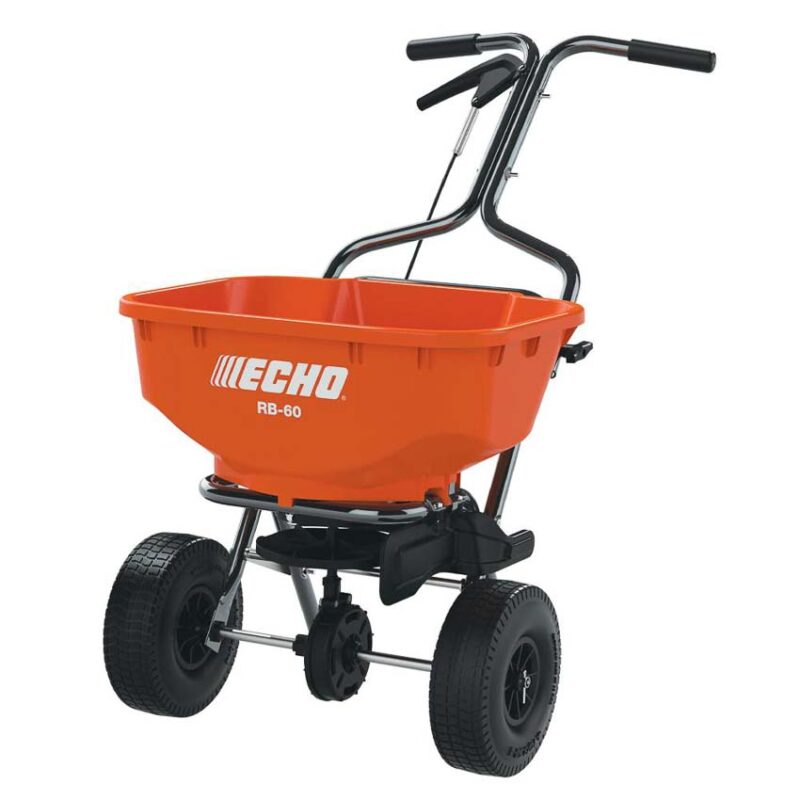
The two main types of broadcast spreaders are pushed and tow-behind spreaders. Broadcast spreaders fling fertilizers in all directions, and they are excellent tools for applying fertilizers in large areas where containment is not a problem.
Most push spreaders are wheel-driven and work best when you walk about 3 mph. At this speed, fertilizer is cast far and wide.
If you have a riding lawn mower, you can use the tow-type broadcast spreader. They hold large quantities of fertilizer and make quick work of large applications.
Drop spreaders
This type of spreader also comes in push and tow-behind models. Drop spreaders are best when a precise application is important or when you’re trying to contain the distribution of the fertilizer and keep it out of surrounding flower beds.
Push spreaders, or walk-behind spreaders, have a handle to release the fertilizer and a lever or dial on the bottom of the hopper to adjust the flow. Tow spreaders have levers located at the top of the hopper that you can reach while you’re operating your lawn tractor.
Using a Lawn Spreader
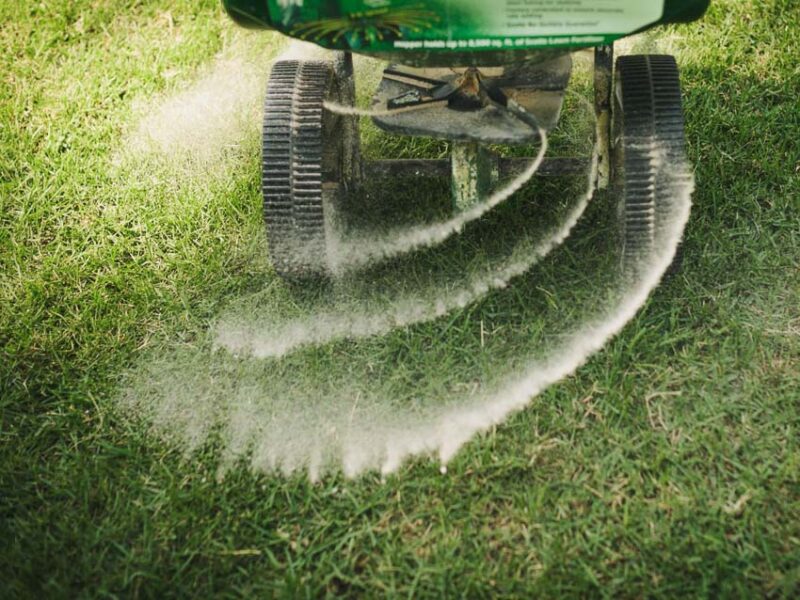
Follow these expert tips for the best results when using a lawn spreader.
Selecting the right lawn spreader
The size of your lawn will determine the best lawn spreader for your yard.
| Size of Lawn | Square Feet | Best Lawn Spreader | Pros and Cons |
|---|---|---|---|
| Very small lawns | Less than 1,000 sf | Handheld spot spreaders | Ideal for small, precise applicationsInexpensive |
| Small lawns | 2,500 sf | Broadcast hand spreaders | Battery-operated models are easy to use. Need to be refilled frequently |
| Medium lawns | 5,000 sf | Small walk-behind drop spreaders | Precise application. Not good for large areas |
| Large lawns | 20,000 sf | Large push broadcast spreaders | Covers large areas. Requires a steady pace |
| Extra large lawns | Over 40,000 sf (about one acre) | Tow behind drop spreaders | Works well in windy locations. May require multiple passes to ensure even distribution |
Calibrating your lawn spreader
Various walking speeds result in different application rates when applying fertilizers with lawn spreaders. Use this easy calibration method to avoid the misapplication of fertilizers:
- Weigh out 6 pounds of fertilizer granules and put them in the hopper. Select the desired setting on your spreader.
- Measure a test strip of 50 feet on your lawn, and mark the beginning and end with small flags.
- Starting at one end, spread fertilizer on the test strip with the lawn spreader.
- Empty the remaining contents of the lawn spreader and weigh them. Then, subtract that amount to determine the amount of fertilizer used on the test strip.
- Measure the width of your spreader’s path. For drop spreaders, it is the width of the wheelbase. For broadcast spreaders, it can be up to 10 feet. Multiply the width of the path by the length of the test strip to determine the test strip area.
- Use the following calculation to determine the amount of fertilizer that will be applied per 1,000 square feet using this setting. (Amount of fertilizer used multiplied by 1,000 divided by the test strip area equals the amount of fertilizer applied per 1,000 square feet.
Proper spreader techniques
Here are a few proven strategies for using lawn spreaders:
- Always close the hopper before you fill it.
- Fill your lawn spreader on paths or driveways to avoid burning your lawn with spills.
- Try not to spread fertilizer on a windy day.
- Start by spreading fertilizer around the perimeter of your lawn.
- Work in rows across your lawn, starting with the longest direction.
- Always empty your hopper before storing it.
Overlap patterns
Overlapping prevents the uneven application of fertilizer, which can result in a striped lawn. The best technique is to use a half rate of fertilizer and overlap your swaths by half.
While many experts recommend a crisscross pattern, the half-rate/half-swath method works best.
Edge-guard features
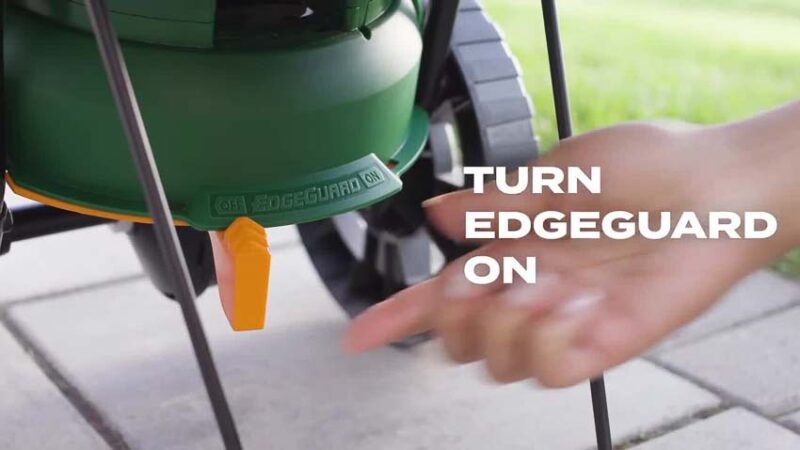
Many lawn spreaders have an edge-guard feature on the right side of the spreader, so you can avoid applying the product on non-lawn areas. Use the edge guard around sidewalks, driveways, ponds, and other areas where you don’t want fertilizer.
Clean-up and maintenance
The chemicals in fertilizers are highly corrosive to metals, and your fertilizer spreader will last much longer if you clean it after every use. Place your lawn spreader on your driveway, and use a hose to rinse it thoroughly.
After it dries, apply some WD-40 to the moving parts for lubrication, then store it in a safe, dry location.
Watering Timing and Fertilization
If you apply granular fertilizers, you should water your lawn immediately after fertilizing. With liquid fertilizers, wait 2-4 hours for your lawn to dry before watering.
The importance of proper watering
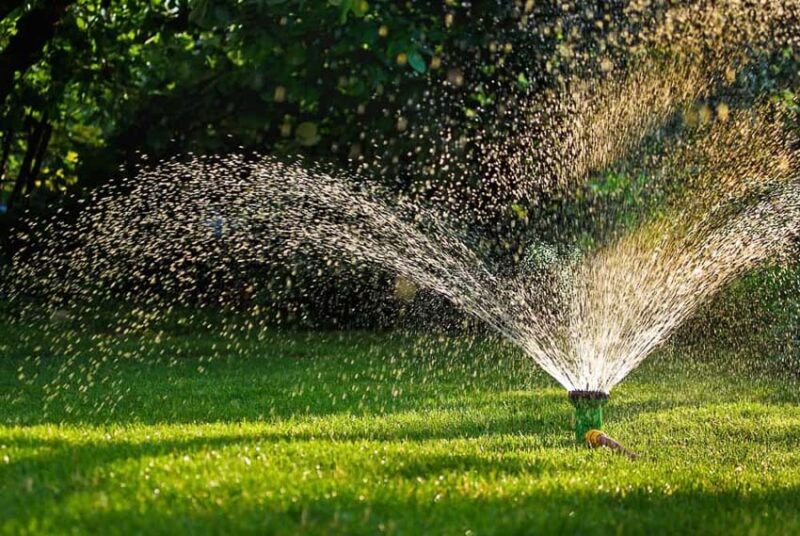
Watering after fertilizing is important because it washes the granules off your grass and into your soil, where it can benefit your lawn. Then, the fertilizer will break down and become soluble so the grass can absorb it.
Watering before fertilizing
Dry soils repel water, so watering your lawn a couple of days before fertilizing will make it easier for the soil to accept the fertilizer. There is less risk of your fertilizer washing off the lawn or leaching through the ground.
Watering after fertilizing
With granular fertilizers, you can wait up to 24 hours before watering without risking your lawn’s health, but if you use a liquid fertilizer, you must water the lawn after about 2-4 hours or risk burning your grass.
The sooner you water your lawn after fertilizing, the quicker it starts working. It’s also important to wash the fertilizer off your lawn if you have children or pets.
Watering frequency and duration
Understanding how to use fertilizer also depends on knowing how often to water your lawn. This can be challenging because your lawn’s needs change throughout the year.
Generally, they do best with deep, infrequent watering, and twice-weekly watering schedules are best.
Since fertilizer is applied during peak growing conditions, your fertile lawn will need plenty of water to combine with the nutrients in the fertilizer. Avoid over-watering because this will leach the fertilizer out of your soil.
Dangers to Pets and Children
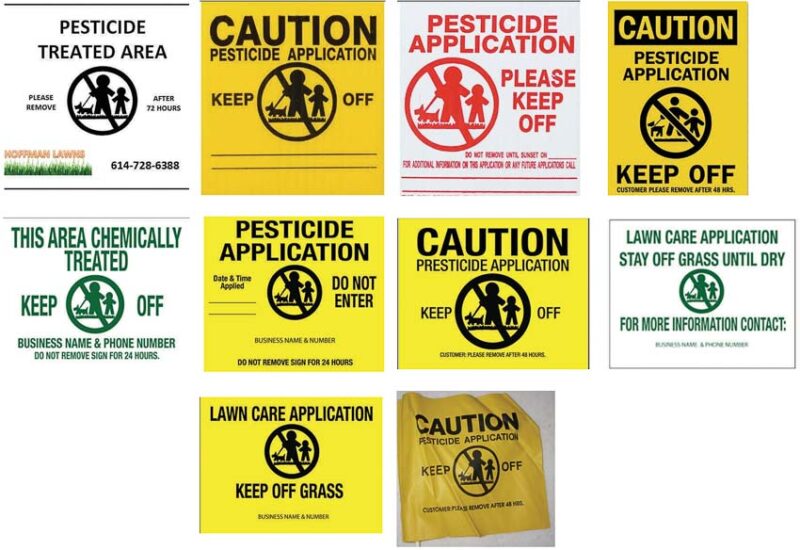
Are lawn fertilizers harmful to children and pets?
It’s important to be aware of the potential risks of lawn fertilizers and take safety precautions when using them. Most fertilizer products come with warning labels, which you should closely follow.
Potential risks of lawn fertilizers
Several diseases, including various types of cancer, have been linked to exposure to lawn fertilizers.
Synthetic fertilizers are manufactured from chemicals like ammonium nitrate and potassium sulfate, which are byproducts of the petroleum industry. Many of them also contain harsh insecticides or herbicides.
Safety precautions during fertilization
Fertilizer dust and granules can get in your eyes and mouth and cause irritation, so it’s best to use gloves, masks, and eye protection when using lawn fertilizers.
Always store fertilizers in containers away from children and pets. Clean up spilled piles of fertilizer and use a hose to wash the fertilizer into the ground.
Post-fertilization guidelines
Watering after fertilizing is the best way to make your lawn safe for children and pets. After 72 hours, the fertilizer should be completely absorbed into the soil.
And always wait at least 24 hours before allowing children and pets on your lawn.
Frequently Asked Questions (FAQ)
How often should I fertilize my lawn?
How often you fertilize your grass depends on the fertilizer you use, your region, and the type of grass you grow. You only need to feed some lawns once a year, while you can fertilize others 5 to 6 times.
When is the best time to fertilize my lawn?
Timing is critical for lawn fertilization, and knowing when to fertilize a lawn is one of the most important aspects of lawn maintenance. The best time to fertilize grass depends on many factors, but generally, your lawn should be actively growing, and the soil temperature should be at least 55°F (13°C).
What are the signs that my lawn needs fertilizing?
Lawns should be bright green, and color is one of the main indicators to determine if your lawn needs fertilizing. Fungal growth, diseases, or insect infestations can also be related to nutrient deficiencies.
It is best to test your soil annually and apply fertilizers regularly.
Can I over-fertilize my lawn? What are the consequences?
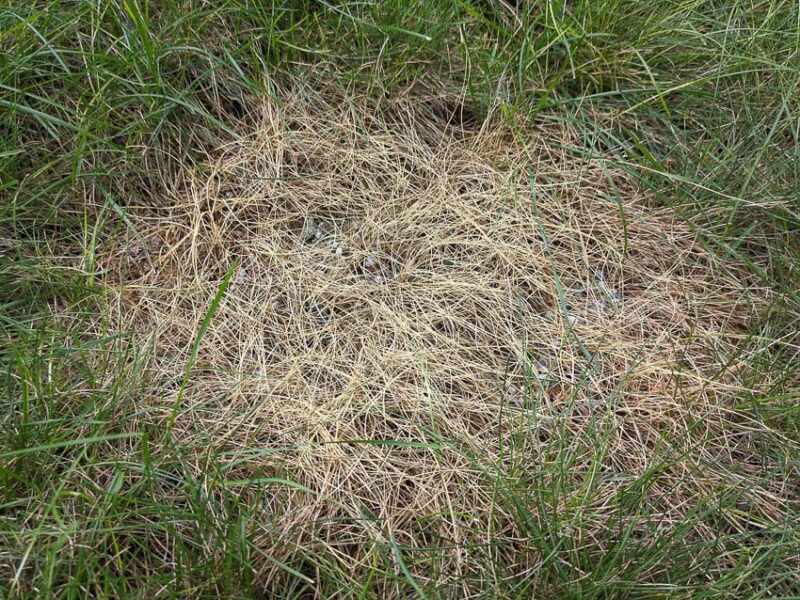
Over-fertilizing your grass can lead to excess thatch and make your lawn more vulnerable to pests and diseases. Wilted, yellowing blades of grass with burnt tips and blackened roots are signs of over-fertilization.
With too much fertilizer, your grass will show very slow growth or stop growing altogether. Extra watering can help your lawn recover faster, but it will still take time.
How long after fertilizing can I allow my pets and children on the lawn?
After yard fertilizing, wait 24-72 hours before letting pets and children on the lawn. Water your lawn as soon as possible after fertilizing it to wash the fertilizer off your grass.
Do I need to fertilize if I use a mulching mower?
Mulching your lawn can provide about 25% of the annual lawn fertilizing requirements, and it’s an excellent way to save time and money. Your lawn will still need fertilizer for lush, healthy growth.

